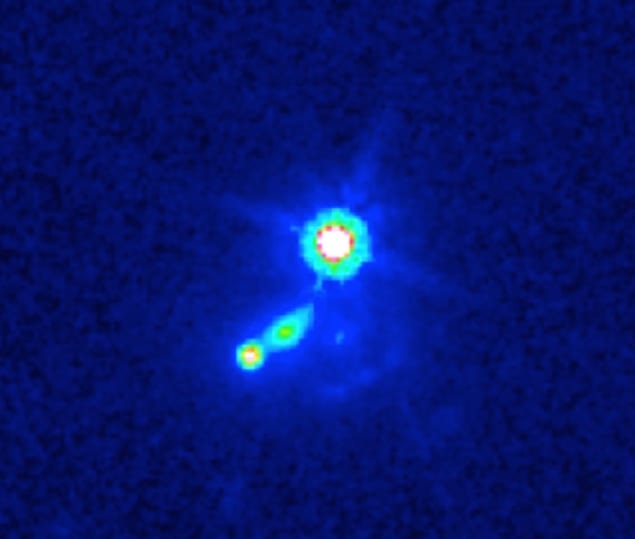
The magnetic field of a galaxy five billion light-years from Earth has been detected by astronomers. This is the most distant galaxy known to have a coherent magnetic field and its measurement suggests that the magnetic fields of galaxies such as the Milky Way emerge early in their lifetimes.
Galaxies have magnetic fields that are typically a million times weaker than Earth’s magnetic field. While these fields are very difficult to measure, studying the magnetic properties of galaxies could provide important clues about how magnetism in the universe formed and evolved to its present state.
Very long time
A popular theory suggests that galactic magnetic fields begin as weak and tangled field lines with little coherent structure. Then, over a very long time scale, the magnetic fields organize themselves into coherent large-scale structures.
This latest measurement was made on a disc galaxy that is similar to the 13 billion-year-old Milky Way – but five billion years younger. The observation of microgauss-strength coherent magnetic fields similar to that of the Milky Way suggests that galactic magnetic fields emerge much earlier than previously thought.
Fossil record
“This means that magnetism is generated very early in a galaxy’s life by natural processes, and thus that almost every heavenly body is magnetic,” says Bryan Gaensler of the University of Toronto – who was involved in the study along with colleagues in Germany, the US and the UK. “Nobody knows where cosmic magnetism comes from or how it was generated,” he adds, “But now, we have obtained a major clue needed for solving this mystery, by extracting the fossil record of magnetism in a galaxy billions of years before the present day.”
The measurement was made on a strong lensing system called CLASS B1152+199. Light from a bright and very distant quasar is focused into two images by the nearer galaxy of interest. Radio waves from the quasar pass through the galaxy and undergo Faraday rotation – whereby the direction of polarization of the waves is altered by the galaxy’s magnetic field. Measuring the polarization – and therefore the galactic magnetic field – was done using the Karl G Jansky Very Large Array radio telescope in New Mexico.
The study is described in Nature Astronomy.



